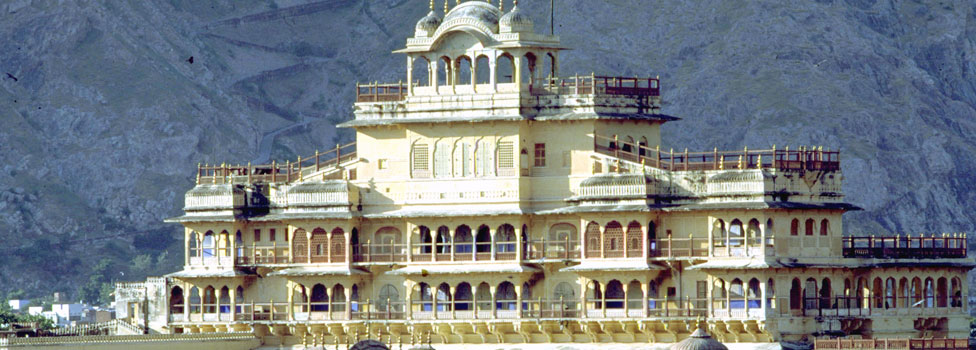Occupying the heart of Jai Singh II’s city, the City Palace has been home to the rulers of Jaipur since the first half of the 18th century. The sprawling complex is a superb blend of Rajput and Mughal architecture, with open, airy Mughal-style public buildings leading to private apartments. Today, part of the complex is open to the public as the Maharaja Sawai Man Singh II Museum, popularly known as the City Palace Museum. Its treasures, which include miniature paintings, manuscripts, Mughal carpets, musical instruments, royal costumes and weaponry, provide a splendid introduction to Jaipur’s princely past, and it’s fascinating arts and crafts
Exploring the City Palace
Enter from Atish Pol, and go on to Mubarak Mahal, which has an exquisitely decorated marble and sandstone exterior. Designed by Sir Swinton Jacob, it was originally a royal guest house that was later turned into the Mahakama Khas or the Royal Secretariat. One part now houses the toshakhana or the royal wardrobe section. The other part is the pothikhana or the manuscript section. North of the Mubarak Mahal is the Sileh Khana, once part of the old gunijankhana, or the Department of Music and Dance. It now houses an armory.
Located on a raised platform in the inner courtyard is the Diwan-i-Khas, a simple structure where an impression of intricate design has been created by the clever use of pink and white color on its walls. It was used during ceremonies and is a large, pillared hall with rows of elegant marble pillars and arches. The highlights here are the two silver water containers, the largest in the world, mentioned in the Guinness Book of World Records. Sawai Madho Singh II took along these containers, after filling them with Ganga water, on a trip abroad to avoid having to use ‘foreign water’
Diwan-i-Aam, the hall of public audience, is an enclosed area where court durbars and ceremonies were held. Built by Sawai Pratap Singh, this huge hall has painted walls, cut-glass chandeliers and massive marble pillars. It houses the king’s collection of miniature paintings, manuscripts and carpets.
The Pritam Niwas Chowk is an enclosed courtyard where dance performances were once held. Built by Pratap Singh, it has four beautifully painted gateways that represent different seasons. Beyond this lies the seven-storeyed Chandra Mahal, the oldest structure of the City Palace complex where the royal family still lives. North-east of it is the famous Govind Devji Temple, built so that the king could view it from his apartments.
How to reach the Amber Fort
By Air
Jaipur’s Sanganer Airport is just south of the city
By Rai
Jaipur Station well connected to Delhi by Ajmer Shatabdi and Delhi-Jaipur Express, to Mumbai by the Bombay Central-Jaipur and Aravalli expresses, and to Kolkata by the Howrah-Jaipur Express
By Road
NH8 links Jaipur to Delhi via Shahpura and Dharuhera, and to Mumbai via Ajmer, Udaipur, Ahmedabad, Baroda, Bharuch, Pardi, Talasari and Manor. RSRTC operates deluxe coaches from Bikaner House in Delhi near Pandara Road. Excellent bus connections are also available from Jaipur’s Sindhi Camp Central Bus Terminal to other destinations in Rajasthan and beyond.
City Palace, Jaipur


